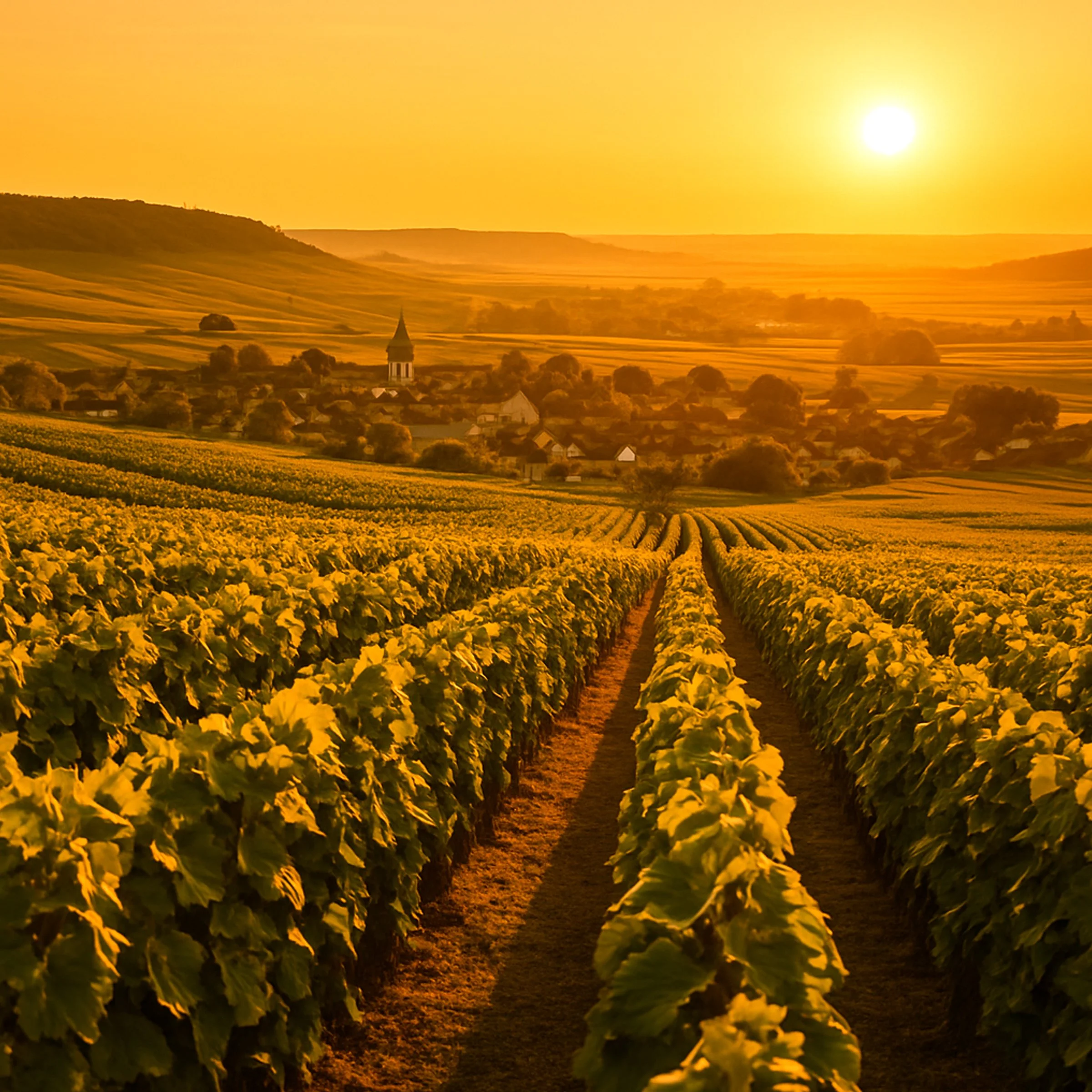CHAMPAGNE
The Essence of Celebration
Champagne is more than just a sparkling wine — it’s a global symbol of celebration, elegance, and craftsmanship. Made exclusively in the Champagne region of France, this wine has earned its reputation through centuries of precision, patience, and prestige.
Key Characteristics
Champagne offers bright acidity, fine bubbles, and a layered palate ranging from citrus and apple to brioche, almond, and chalky minerality.
Style
Sparkling
Body
Light to medium
Acidity
High
Primary Grapes
Chardonnay, Pinot Noir, Pinot Meunier
Typical Flavors
Lemon zest, green apple, toast, almond, white flowers
Origin & History
Though sparkling wine has been made in many regions, only wine produced in France’s Champagne region can bear the name. Its history dates back to the 17th century, when winemakers refined the méthode champenoise, creating the distinct style we know today. Monks like Dom Pérignon helped shape its reputation, and over time Champagne became synonymous with prestige and celebration.
How It’s Made
Champagne undergoes a second fermentation inside the bottle, which creates its bubbles naturally. The wine is aged on its lees (yeast cells) to develop complexity and creaminess, then clarified, dosed with sugar (if any), and sealed. This traditional method is labor-intensive, but it’s the gold standard for sparkling wine production.
Notable Regions
Champagne is divided into several key growing areas, each with its own expression.
Montagne de Reims
Powerful Pinot Noir
Côte des Blancs
Elegant, mineral Chardonnay
Vallée de la Marne
Fruity, supple Meunier
Aube (Côte des Bar)
Up-and-coming region with bold Pinot Noir styles
Food Pairings
Champagne’s high acidity and bubbles make it incredibly food-friendly. It pairs just as well with refined dishes as it does with everyday favorites.
Classic
Oysters, caviar, sushi
Decadent
Triple-cream cheeses, lobster, foie gras
Surprising
Fried chicken, potato chips, popcorn
How to Serve It
Glassware
Tulip glass, or a white wine glass, to capture aroma
Temperature
45–50°F (7–10°C)
Storage
Upright, cool, and away from light
Fun Fact
Champagne bottles contain up to 90 pounds of pressure per square inch — that’s more than your average car tire. The cork can fly out at 50 mph!
Try This If You Like
Crémant
France
Traditional method sparkling wines from other French regions.
Cava
Spain
Fine bubbles, often aged in oak.
Franciacorta
Italy
More affordable, crisp, and made in the same method.
Recommended Producers
These houses exemplify the diversity and craftsmanship of Champagne.
Bollinger
Known for rich, Pinot Noir–driven wines with depth, structure, and a signature toasty style.
Pierre Gimonnet & Fils
A grower-producer celebrated for elegant, Chardonnay-focused Blanc de Blancs from the Côte des Blancs.
Dom Pérignon
An iconic prestige cuvée produced by Moët & Chandon, released only in exceptional vintages.
Billecart-Salmon
Revered for finesse and purity, especially in their celebrated Brut Rosé.
Recommended Pours
Bollinger - Brut Champagne Special Cuvee NV — A rich, full-bodied Champagne with notes of baked apple, toasted brioche, and hazelnut. Known for its depth and Pinot Noir dominance, this classic cuvée is structured and refined.
Pierre Gimonnet - Brut Champagne Blanc de Blancs "Cuis" NV — Crisp and elegant, this Chardonnay-based Champagne offers fresh citrus, green apple, and chalky minerality. A precise grower Champagne with a clean, vibrant finish.
Dom Perignon - Champagne 2015 — A prestige vintage cuvée combining intensity and finesse. Expect aromas of stone fruit, toasted almond, and subtle smoke with a long, silky finish. Celebratory and timeless.
Billecart - Salmon - Brut Champagne Rosé NV-1 — Delicate and refined with aromas of wild strawberry, citrus zest, and rose petals. A benchmark rosé Champagne known for its finesse, balance, and creamy mousse.





